Exploring Victorian Era Jewelry: A Comprehensive Guide
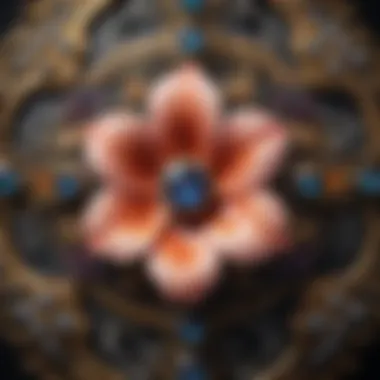
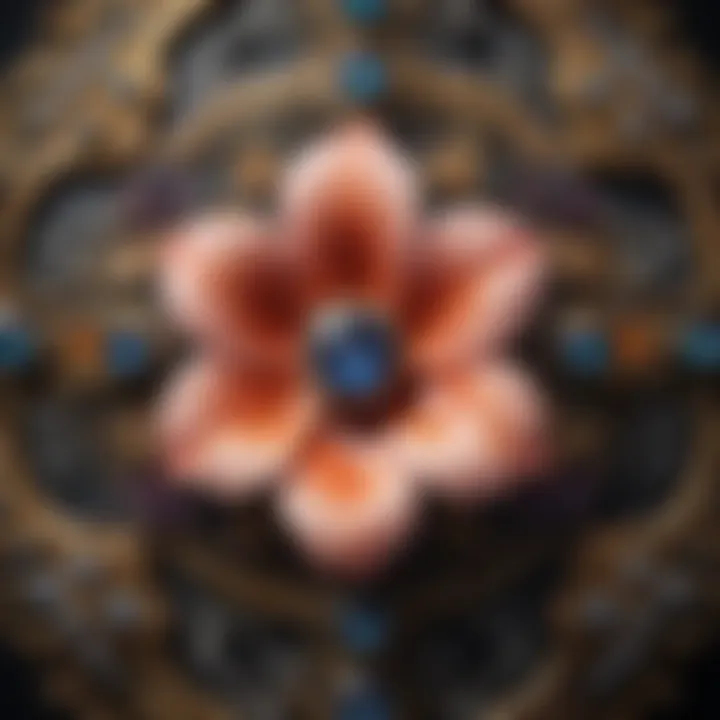
Intro
The Victorian era is often remembered for its cultural richness and rapid industrial progress. This period influenced many aspects of society, including jewelry design. Understanding Victorian jewelry is essential not just for collectors but also for those interested in history and culture. The intricate designs and unique materials used during this time reflect societal changes and technological advancements.
Gemstone Overview
Definition and Origins
Gemstones play a crucial role in Victorian jewelry, serving as both decoration and symbols of deeper meanings. During the Victorian era, the popularity of various gemstones surged. Diamonds, emeralds, rubies, and sapphires were among the most cherished. Many of these stones were sourced from newly discovered mines in regions such as Africa and South America, leading to greater availability and affordability.
The origins of each gemstone often influence its desirability. For example, the rise of diamond engagement rings was directly tied to the discovery of diamond mines in South Africa. This made diamonds not only more popular but also more accessible for the emerging middle class.
Historical Significance
Victorian jewelry is characterized by its connection to the social and emotional contexts of the time. It offered a way to express personal beliefs, social status, and connections to significant events. Jewelry was often crafted as gifts for loved ones, carrying personal messages that transcended mere ornamentation.
The significance of gemstones during this era also extended to their perceived meanings. Victorians believed that certain stones could bring luck or symbolize important ideals. For example, the use of garnet often represented love, while pearls signified purity. This intertwining of meaning and physical beauty only increased the allure of Victorian jewelry.
Gemstone Properties
Hardness and Durability
Hardness and durability of gemstones are important in jewelry design. Based on the Mohs scale of hardness, gemstones such as diamond stand at a 10, making them exceptionally durable. This quality suited them well for everyday wear, particularly in rings that were both cherished and often worn.
On the other hand, softer stones like opals rank lower on the scale. These stones required careful handling and were more suitable for occasional wear. Understanding these properties is crucial for collectors and designers, as it influences both how pieces are crafted and their long-term value.
Color and Clarity
Color and clarity are pivotal attributes of gemstones. The Victorian era celebrated a range of colors, often using them to complement the wearer’s outfit or to convey specific messages. For instance, vibrant colors in gemstones could represent joy, while deeper hues often symbolized sorrow or loss.
Clarity is equally significant. Clear gemstones, free from inclusions, were highly prized as they exhibited brilliance and shine. However, some imperfections might add character, making unique pieces even more desirable.
Understanding these properties enhances the appreciation for Victorian jewelry, as each piece tells a story.
Preamble to Victorian Era Jewelry
The Victorian era, lasting from 1837 to 1901, is well known not just for its historical and cultural shifts but also for its rich contribution to jewelry design. This period marked a transformational shift in aesthetics, craftsmanship, and the materials used. It is crucial to understand the varied factors that led to the distinct styles and symbols in Victorian jewelry. This guide provides deeper insight into the importance and evolution of jewelry during the Victorian period.
Jewelry in the Victorian era was not merely decorative. It served as a reflection of societal values, emotional states, and personal connections. This era's jewelry often expressed sentiments that transcended mere adornment, encompassing themes of love, memory, and social status. By examining the jewelry of this time, one gains an appreciation for its role in daily life and its symbolism.
Contextual Background
The Victorian era coincided with immense change in Britain. The Industrial Revolution introduced new techniques and materials that reshaped not only the production of jewelry but also the way it was perceived by society. Economic prosperity allowed greater access to precious metals and gemstones, while advancements in technology improved manufacturing processes.
During this time, the rise of the middle class significantly influenced jewelry trends. Jewelry was increasingly available to those beyond the aristocracy, leading to a broader range of designs catering to different tastes and preferences. Each piece carried its own significance, often intertwined with the social and cultural context of the time.
Societal Influences
The jewelry of the Victorian era was deeply influenced by the social constructs of the time. One important aspect was the ideal of romanticism, which emphasized emotion and individualism. Jewelry became a medium for expressing romantic feelings and social connections, often through sentimental pieces like lockets or rings adorned with intricate designs.
Moreover, the symbolism of mourning jewelry arose during this era, marking the societal tendency to publicly express grief. Pieces designed for mourning often included dark materials such as jet and were adorned with motifs like skulls or weeping willows. These designs not only reflected personal loss but also served as a reminder of the transient nature of life, a sentiment shared widely across different social classes during this time.
Ultimately, understanding the context and societal influences behind Victorian era jewelry broadens our grasp of why these pieces remain significant. They serve as historical artifacts, conveying messages about the era's culture, technological advancements, and emotional depth.
Distinct Characteristics of Victorian Jewelry
The Victorian era jewelry presents a fascinating study of design evolution influenced by cultural shifts and artistic movements. Understanding the distinct characteristics of this jewelry category shines a light on its rich history. This exploration is vital, as it helps gemstone enthusiasts, collectors, and jewelry designers appreciate the intrinsic value and craftsmanship behind these pieces.
Romanticism and Aesthetic Movement
The Romanticism and Aesthetic Movement greatly influenced Victorian jewelry design. These movements favored individual expression and the beauty of nature. Jewelry created during this time often featured intricate designs that emphasized romantic themes. Common motifs included flowers, hearts, and natural elements. This fascination with nature meant that jewelers were inspired to experiment with forms, textures, and colors.
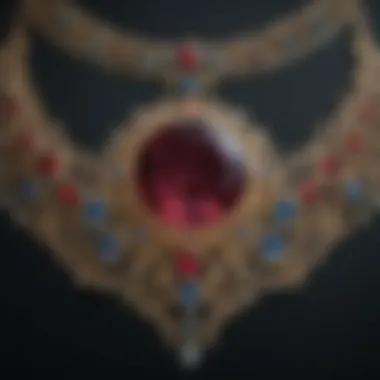

Goldsmiths and artisans drew on these artistic currents, creating pieces that captured the imagination and evoked deep emotion. Innovations in machinery allowed for detailed engraving and casting techniques, which enhanced the decorative quality of jewelry. The elaborate craftsmanship reflected the values of the era, celebrating both beauty and sentiment. This resulted in pieces that were not simply adornments but instruments of personal expression, conveying feelings and intentions between wearers and their loved ones.
Naturalistic Designs
Naturalistic designs characterized much of the jewelry produced during this time. Jewelers sought to replicate the textures and forms found in nature, which often resulted in unique interpretations of floral patterns and animal shapes. Examples include brooches shaped like leaves or lockets adorned with engravings of beloved animals.
The incorporation of botanical themes was not just an aesthetic choice; it also reflected the growing interest in botany during the Victorian period. Many people collected plant specimens, and this passion seeped into artistry as well. These jewelry designs became a way for individuals to carry a piece of nature with them, a sentiment that continues to resonate today.
Furthermore, gem selection played a crucial role in naturalistic designs. Precious and semi-precious stones, like emeralds and sapphires, were often set in ways that complemented their natural hues and qualities.
This era witnessed the birth of a design philosophy that celebrated the connection between art and nature, making pieces deeply meaningful for their owners.
In summary, the distinct characteristics of Victorian jewelry underscore its elegance and its relationship to broader artistic movements. The intertwining of Romanticism and naturalistic inspiration shaped the period's creations, resulting in varied pieces that remain treasured by collectors and designers alike.
Materials Employed in Victorian Jewelry
The materials used in Victorian jewelry reflect a complex interplay of craftsmanship and cultural significance. During the Victorian era, jewelry evolved to symbolize wealth, status, and personal sentiments, connecting deeply with societal influences. Understanding the materials used is essential as they contribute greatly to the aesthetics and value of these pieces. Moreover, the choice of materials often indicates the emotional undertones of different jewelry types, whether it’s mourning or romantic expressions. The detailed examination of the materials can also enhance appreciation for the artistry involved in crafting these timeless artifacts.
Gold and Silver Usage
Gold and silver were the cornerstone of Victorian jewelry. These precious metals offered durability while also allowing for intricate designs. Gold often carried a warm hue and could be fashioned into various karats, each level of purity signifying different social status. Low-karat gold was popular among the middle class, seeking affordable yet appealing pieces. On the other hand, high-karat gold denoted luxury and was typically reserved for the elite.
Silver, known for its luster and versatility, was also extensively used. Its cost-effectiveness made it accessible for a broader audience, while still allowing for elaborate detailing. The combination of gold and silver in a single piece was common, creating striking contrasts and enhancing visual appeal.
Gems and Their Significance
Gems played a significant role in Victorian jewelry, each carrying unique meanings and cultural implications. Let’s explore four key gemstones.
Diamonds
Diamonds were deemed the ultimate symbol of purity and endurance. Their hardness made them a practical choice for everyday wear, but what set diamonds apart was their brilliance. Often chosen for engagement rings, diamonds symbolized everlasting love and commitment. Their clarity and fire added an element of luxury, making alterations or repairs challenging, due to their hardness. Despite being expensive, their enduring appeal rendered diamonds a favorite among upper classes and collectors alike.
Emeralds
Emeralds, with their vibrant green color, symbolized growth and renewal. They were often worn by individuals seeking prosperity and hope. During the Victorian era, emeralds became especially fashionable for their bold hues and exotic origins from places like Colombia. Their distinct color made them a sought-after choice in elaborate designs.
Despite being softer than diamonds, emeralds added a unique richness and emotional depth to jewelry. They often required careful handling and meticulous care, making them somewhat impractical for everyday wear but exceptionally valued by collectors.
Rubies
Rubies are associated with passion and power, known for their deep red hue. The stone's significance extended beyond aesthetics; it was believed to hold protective qualities, making it a popular choice for engagement rings and personal talismans. Rubies were often favored for their bold, vibrant appearance which could enhance any piece of jewelry. However, their uniqueness comes at a cost; high-quality rubies can be quite expensive and are not as readily available as other stones.
Sapphires
Sapphires, praised for their serene blue colors, represented wisdom and royalty. These gemstones were commonly found in Victorian pieces symbolizing fidelity and sincerity. Their durability makes them ideal for various styles, thus appealing to a range of individuals. Sapphires allowed for artistic creativity in settings and designs, but the value largely depended on the clarity and saturation of the color. The allure of sapphires holds true in contemporary times, further influencing modern jewelry designs.
Semi-Precious Stones
Semi-precious stones played a vital role in Victorian jewelry, providing accessible elegance and diversity. Stones like amethyst, garnet, and opal were frequently used, enhancing designs while keeping costs reasonable. Each semi-precious stone carried its own significance, contributing to the piece's overall meaning. For example, amethyst was thought to promote clarity and sobriety, while garnets symbolized friendship and loyalty. The use of these stones allowed jewelers to create eclectic styles that could be tailored to individual tastes and societal meanings.
Ultimately, the myriad materials employed in Victorian jewelry not only defined the pieces aesthetically but also infused them with cultural identities and personal stories. The careful selection and combination of these elements provide an insightful look at the jewelry of the era.
Types of Victorian Jewelry
Understanding the types of Victorian jewelry provides insight into the era's cultural context and craftsmanship. Each piece reflects the societal values, technological advancements, and artistic movements of the time. Victorian jewelry served personal purposes, like expressing emotions or commemorating events. This section highlights four significant types: brooches and pins, necklaces and lockets, bracelets and bangles, and rings.
Brooches and Pins
Brooches and pins were prominent accessories during the Victorian era. They varied in design and material, making them versatile for different occasions. Typically worn on clothing, they added a personal touch to any outfit.
Many brooches featured intricate designs that reflected nature or symbolic motifs. They often contained gemstones, enhancing their visual appeal and value. Mourning brooches, which held portraits or hair of deceased loved ones, were especially meaningful. This type of jewelry was common as a way to remember and honor those who had passed.
The popularity of whimsical shapes, such as animals or flowers, also emerged during this period. This allowed wearers to express individuality and personal style.
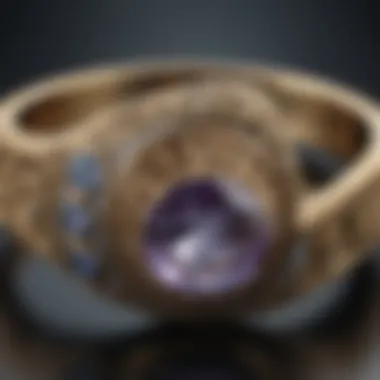
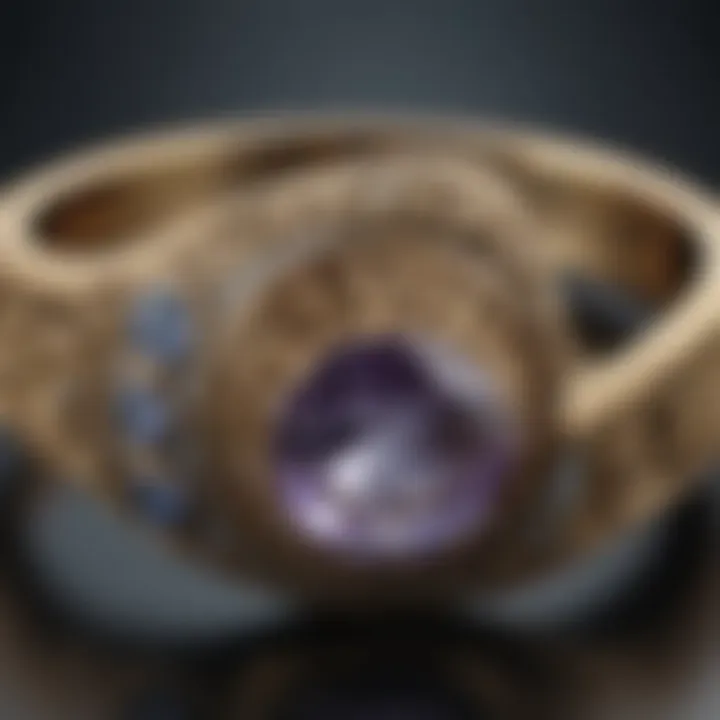
Necklaces and Lockets
Necklaces and lockets held a significant place in Victorian jewelry collections. These pieces often served not only as adornments but also as vessels for memory. Lockets typically contained tiny photographs or mementos. They represented the intimate connection between the wearer and the memory held inside.
Popular designs included intricate chains, pendant styles, and elaborate fixtures. Gold and silver were favored materials, often adorned with gemstones for added elegance. Many necklaces incorporated the use of pearls, which symbolized purity and were favored by many Victorian women.
The emotional breadth embodied in necklaces and lockets made them especially beloved during this time. They were perfect gifts for loved ones, marking important occasions and relationships.
Bracelets and Bangles
Bracelets and bangles were also essential to Victorian jewelry. They varied from simple designs to elaborate, ornate pieces. Many displayed themes of nature and romance, aligning with the prevailing aesthetic movements.
Materials like gold, silver, and enamel were commonly used in their creation. Some designs highlighted intricate engravings or gemstones, making them stand out. Charm bracelets became fashionable, as wearers often added charms that reflected personal stories or interests.
These jewelry pieces were not just fashion statements; they also represented wealth and status. Wearing multiple bangles or stacking bracelets was a way to showcase one's affluence and taste in jewelry.
Rings
Rings held immense significance in Victorian jewelry. They were often more than mere adornments; they symbolized commitment, love, and notable life events. Engagement and wedding rings became essential markers of romantic relationships. Such rings frequently featured diamonds and old-cut gemstones that highlighted the artistry of the era.
Other rings were created for mourning purposes, incorporating lockets or hair as part of the design. These served as poignant reminders of the deceased. Beyond emotions, rings also represented milestones, such as anniversaries.
Many designs reflected the trends and values of the time, including intricacies like the use of filigree and the interpretation of nature. Whether symbolizing love, memory, or status, the ring holds a unique place in Victorian society's jewelry spectrum.
"Victorian jewelry is not just about the beauty of the pieces. It captures the essence of an era marked by profound societal changes."
The exploration of the types of Victorian jewelry reveals a fascinating interplay between personal expression, symbolism, and craftsmanship. Each piece tells a story, reflecting both the material and emotional landscapes of a bygone era.
Symbolism in Victorian Jewelry
The Victorian era is notable for layering profound meaning into personal adornments, with symbolism at its core. Jewelry from this period often transcended mere aesthetic appeal, reflecting deep sentiments and societal mores. These symbolic elements shaped the identity of wearers and communicated emotions, beliefs, and status. The use of specific designs and motifs allowed individuals to convey messages without uttering a word. For enthusiasts, collectors, and designers, understanding this symbolism provides a richer perspective on the jewelry itself, adding historical and emotional depth to their appreciation.
Mourning Jewelry
Mourning jewelry became a prominent feature during the Victorian period, particularly after the death of Prince Albert in 1861, which deeply affected Queen Victoria. These pieces were created to commemorate deceased loved ones. Often crafted from dark materials, such as jet, and sometimes incorporating human hair, mourning jewelry served as a tangible remembrance. Popular items included rings, brooches, and lockets which often featured urns, crosses, or the initials of the departed.
The act of wearing mourning jewelry was not just about remembrance; it also reflected social attitudes towards death and grieving. Jewelry became an outward expression of one’s loss while providing comfort to the bereaved. The inclusion of symbols like weeping willows or hearts emphasized the emotional weight of the loss. Additionally, these pieces often followed strict guidelines concerning when and how long one should wear them, adhering to societal norms.
Mourning jewelry illustrates how emotions could be embodied in objects, effectively merging personal grief with societal expression.
Tokens of Love
Another significant aspect of Victorian jewelry symbolism is the use of tokens of love. Couples exchanged rings, lockets, and bracelets adorned with meaningful symbols to signify affection and commitment. Pieces often were engraved with messages or featured motifs such as hearts, flowers, and doves. The aesthetic of these items combined beauty with profound personal meaning, and many were designed to be worn close to the body, symbolizing the intimate bond between partners.
Lockets, specifically, became a popular choice for securing miniature portraits or locks of hair. These pieces not only served as a fashion statement but also held deep personal significance for wearers. They acted as cherished reminders of a loved one, be it a romantic partner or a family member.
The designs were influenced by the era's romantic ideals, and as such, they often portrayed elaborate motifs that resonated with the emotions associated with love.
In summary, the symbolism in Victorian jewelry profoundly shaped how wearers expressed themselves. Whether through mourning pieces or tokens of love, jewelry was imbued with meanings that went beyond ornamentation. Understanding this aspect enriches the comprehension of Victorian jewelry, making it an intriguing subject for both individuals and collectors.
The Technological Impact on Jewelry Design
The Victorian era witnessed profound advancements in technology that reshaped the landscape of jewelry design. These innovations directly influenced the creativity, complexity, and accessibility of pieces crafted during this period. Understanding how technology impacted jewelry design provides crucial insight into the distinctive characteristics that define this era. It illuminates the relationship between cultural developments and artistic expression, making a careful examination essential for enthusiasts and collectors alike.
Advancements in Techniques
The Victorian period introduced several significant techniques that transformed how jewelry was designed and produced. One notable innovation was the introduction of the steam engine, which enabled faster and more efficient production processes. This advancement allowed jewelers to experiment with intricate designs that would have been labor-intensive in previous eras.
Additionally, the development of new tools, such as the rolling mill, facilitated the manipulation of metals with greater precision. Jewelers could create thinner sheets of gold and silver, leading to an expansion in the range of designs available.
This technological leap also allowed for the introduction of new styles, such as filigree and granulation, which added layers of detail to jewelry.
Furthermore, the rise of the hydraulic press enhanced the ability to produce components efficiently, paving the way for more elaborate forms without compromising on quality. This means that complex designs became more accessible not only for master craftsmen but for emerging jewelers who could now replicate intricate patterns and styles.

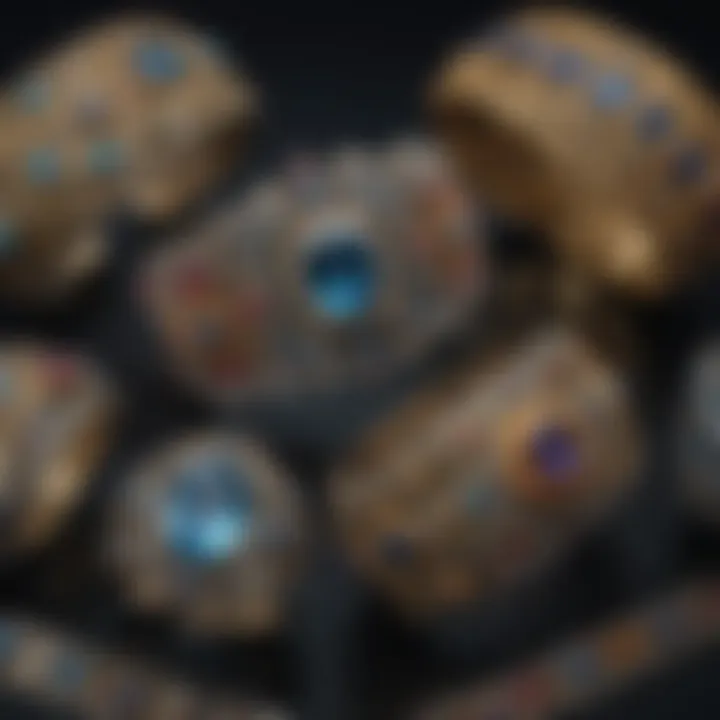
Mass Production of Jewelry
The concept of mass production was revolutionary for Victorian jewelry, as it allowed for a wider distribution of designs that would otherwise remain exclusive to the wealthy. With the decline of handcrafted jewelry in favor of factory-produced pieces, a broader audience gained access to ornamental adornments.
This shift enabled the production of popular items such as memorial brooches and lockets that catered to both the mourning culture and romantic sentiments of the period. The ability to produce jewelry on a larger scale led to greater affordability, transforming ownership of these pieces into a more widespread social phenomenon.
Moreover, the increase in production capacity did not diminish the aesthetic value of the pieces. Factories adopted new processes that maintained a high standard of quality while scaling output. The rise of shopfronts specializing in Victorian jewelry also contributed to how people perceived beauty and fashion in their social circles.
A noteworthy consequence of mass production was the emergence of jewelry as a fashion accessory, evolving from mere status symbols to being elements of personal expression. This has shaped how contemporary consumers view jewelry today, connecting historical practices to modern sensibilities.
"The integration of technology did not just enhance manufacturing; it revolutionized how society interacts with adornment, influencing a generation’s lifestyle and cultural identity."
Victorian Jewelry in Pop Culture
Victorian era jewelry has continued to resonate in popular culture, demonstrating its timeless appeal and significance. Its influence is seen across fashion, films, and art, making it more than just a historical artifact. This section explores the ways in which Victorian elements have been adapted into modern styles and how these representations in various media serve to keep the legacy alive.
Victorian Elements in Modern Fashion
The resurgence of Victorian designs in contemporary fashion is noteworthy. Designers frequently draw inspiration from the intricate craftsmanship and ornate aesthetics that define this period.
- Silhouettes: Modern garments often incorporate Victorian silhouettes. High-neck blouses, bodice-style dresses, and fitted corsets make frequent appearances in seasonal collections.
- Jewelry and Accessories: Pieces like choker necklaces and elaborately designed brooches often pay homage to Victorian styles. These elements can be easily integrated into daily wear, showcasing the elegance of this bygone era without appearing overly formal.
- Fabrics and Patterns: Velvet, lace, and elaborate floral patterns are used similarly to Victorian era garments, creating a sense of opulence and sophistication.
Moreover, many fashion icons and influencers have embraced these Victorian elements, amplifying their popularity. Vintage markets and online platforms provide access to original pieces or reproductions, making it easier for enthusiasts to incorporate Victorian jewelry into their outfits.
Historical Representations in Media
The portrayal of Victorian jewelry in film and literature also plays a crucial role in its cultural relevance. Numerous films and television series set in the Victorian era often showcase the luxurious jewelry characters would have worn.
- Film Adaptations: Movies such as "Pride and Prejudice" or "The Other Boleyn Girl" provide vivid illustrations of how jewelry can reflect a character's social status or emotional state. The careful selection of jewelry by costume designers often transports audiences back to the nuances of Victorian life.
- Literary References: The symbolism of Victorian jewelry is frequently referenced in literature, where it signifies love, loss, or social ambition. These narrative elements enrich the reader's understanding of the importance of jewelry in the society of that time.
In summary, Victorian jewelry has transitioned from its historical context into various aspects of modern life, constantly evolving yet remaining rooted in its original significance. The fusion of these elements into contemporary culture serves not only to commemorate the past but also to inspire future designs and interpretations, ensuring the elegance of the Victorian era continues to be appreciated.
Caring for Victorian Era Jewelry
Caring for Victorian era jewelry is crucial, not only to preserve its physical structure but also to maintain its historical value. As an artifact of a significant period in jewelry design, such pieces need specialized attention. Given their age and the materials used, inappropriate handling or care can lead to irreversible damage. Proper maintenance ensures that these exquisite items last for generations to come. Understanding specific cleaning methods and storage options will help collectors and enthusiasts safeguard their treasured pieces while highlighting their elegance.
Cleaning Techniques
Maintaining the brilliance and condition of Victorian jewelry requires careful cleaning methods. Here are some effective techniques:
- Gentle Dusting: Use a soft, lint-free cloth or a brush to remove surface dust. This simple task should be done regularly to prevent dirt accumulation, which can cause scratches over time.
- Mild Soap Solution: For a deeper clean, a mixture of warm water and a few drops of mild soap is often sufficient. Dip a soft cloth into the solution, wring it out well, and gently wipe the jewelry. Avoid soaking, as prolonged exposure to moisture can damage delicate elements.
- Avoid Harsh Chemicals: Stay clear of abrasive substances or strong jewelry cleaners, as they might strip away the jewelry’s finish or harm the gemstones. Stick to natural cleaning agents when possible.
- Care with Gems: Great caution is needed when cleaning pieces with delicate gems. Certain stones may be more porous and prone to damage. Always research the specific needs of each gem type before cleaning.
- Professional Cleaning: For very valuable or intricate pieces, consider seeking professional help. Jewelers have the knowledge and tools to clean and restore jewelry without risking damage.
"Proper care is essential for maintaining the aesthetic appeal and integrity of Victorian era jewelry. It is not only about cleanliness but also about respecting the craftsmanship involved."
Storage Recommendations
Organizing and storing Victorian jewelry correctly is vital to preventing damage and wear. Here are some practical recommendations:
- Use Soft Pouches: Store pieces in individual soft pouches to prevent scratching. Avoid plastic bags since they can trap moisture and cause tarnishing.
- Jewelry Boxes: Invest in a quality jewelry box with compartments. This can keep pieces separated, minimizing the risk of tangling or scratching.
- Maintain Dry Conditions: Always store jewelry in a climate-controlled environment that is cool and dry. Excessive heat and humidity can lead to tarnish and other forms of degradation.
- Avoid Direct Sunlight: Keep jewelry away from direct sunlight. Ultraviolet rays can fade certain materials and weaken some gemstones.
- Regular Inspection: Periodically check your collection for signs of wear or damage. Early detection allows for timely repair, ensuring the longevity of each piece.
By adopting these cleaning techniques and storage recommendations, both collectors and enthusiasts can enjoy their Victorian era jewelry while preserving its unique charm and historical significance.
The End: The Lasting Legacy of Victorian Jewelry
The conclusion of this exploration on Victorian jewelry encapsulates its profound impact on both historical and contemporary contexts. The legacy of this era signifies more than just ornamentation; it represents a confluence of artistry, culture, and technological advancement. In examining the displays of wealth and emotion through intricate designs and exquisite materials, we see how the jewelry of this period catered to personal sentiment and societal norms. The Victorian era unmistakably reshaped jewelry design, making it essential to understand its implications in our current aesthetic choices.
Enduring Appeal
The enduring appeal of Victorian jewelry lies not only in its aesthetic charm but also in its rich history. Collectors and enthusiasts prize pieces for their craftsmanship and intrinsic value. The ornate designs, ranging from romantic motifs to nature-inspired elements, continue to capture the imagination. Each piece tells a story, whether it symbolizes love, mourning, or a mark of social status. Furthermore, the detailed attributes of Victorian jewelry enable modern creators to draw inspiration from its profound styles.
Pieces like lockets and mourning rings represent personal narratives, allowing new generations to connect with the past. The emotional resonance imbued within these items fosters a nostalgic appreciation that few other jewelry styles can emulate, ensuring its relevance in today's fashion landscape.
Future of Collecting Victorian Jewelry
Looking forward, the future of collecting Victorian jewelry appears promising. As awareness and appreciation for antique and vintage items increases, collectors are realizing the intrinsic value of these unique pieces. Prices for genuine Victorian jewelry are likely to rise as rarity becomes an essential factor.
The rise of digital platforms offers opportunities for enthusiasts. Online marketplaces and social media communities allow collectors to share knowledge, feedback, and trading options. This connectivity fosters a supportive environment where insights about authenticity and restoration are readily accessible.
As sustainability becomes more significant to consumers, the appeal of Victorian jewelry, with its historical nature, aligns well with current trends toward ethical consumption.



